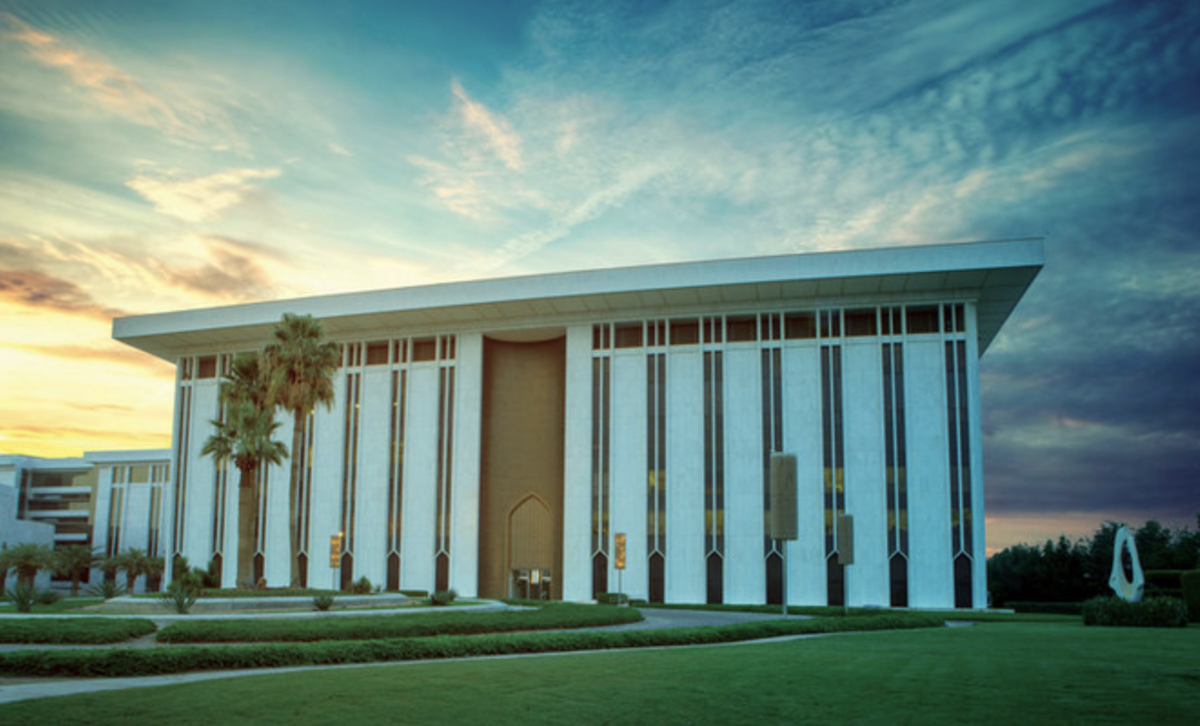RIYADH: An increase in Oman’s narrow money led the country’s broad capital supply to grow 13.3 percent year-on-year to reach 24.2 billion Omani rials ($62.6 billion) by the end of July.
Statistics issued by the Central Bank of Oman showed the climb was mainly attributed to a 16.5 percent increase in narrow funds and 12.1 percent in quasi-money.
This consists of total savings deposits and time deposits in Omani rials, certificates issued by financial institutes, margin accounts, and all foreign currency reserves in the banking sector.
The growth in figures suggests vibrant and expanding economic activity, with more funds circulating within the economy.
Oman’s public revenue saw an annual decline of 2 percent year on year in the second quarter, reaching $16.1 billion, the country’s news agency reported in August.
The sultanate’s economic landscape is heavily influenced by its reliance on oil and gas revenues, making it vulnerable to global price fluctuations.
The government has been actively working to diversify the economy and reduce dependence on hydrocarbons as part of its Vision 2040 plan.
The figures also indicated that cash held by the public decreased by 5.2 percent by the end of July, while demand deposits increased by 22.8 percent, the Oman News Agency reported.
Regarding the interest rate structure of conventional commercial banks, the weighted average interest rate on deposits in Omani rials jumped from 2.3 percent in July 2023 to 2.71 percent in July 2024. The weighted average interest rate on loans in Omani rials increased from 5.4 percent to 5.6 percent during the same period.
The average interest rate in the interbank lending market for one night recorded an increase of 5.32 percent in July compared to 5.54 percent in the same month last year.
This was due to a rise in the weighted average interest rate on repurchase operations, which rose to 6 percent from 5.79 percent during the same period last year. The change aligns with the policies of the US Federal Reserve.
The total credit balance granted by conventional commercial banks in the Gulf country increased 1.6 percent by the end of July and by 0.7 percent for credit given to the private sector to reach 20.4 billion rials.
The total investments of conventional commercial banks in securities increased by 35.8 percent to reach about 6 billion rials by the end of July.
The statistics showed that the investment of these banks in government development bonds decreased by the end of last July by 6.5 percent to reach 1.9 billion rials, while the investment of commercial banks in foreign securities increased by 115 percent to reach 2.5 billion rials.
Regarding the budget’s liabilities, total assets at conventional commercial banks increased by 11.4 percent to reach 24.8 billion rials during the same period.
Within total deposits, government balances at commercial banks decreased by 1.7 percent to reach 5.4 billion rials, while public sector institutions increased by 23.4 percent to reach 1.9 billion rials.
Private sector deposits increased 9.7 percent to reach 16.3 billion rials in July, constituting 65.9 percent of total assets at conventional commercial banks.
S&P Global has raised Oman’s long-term sovereign credit rating for both local and foreign currencies from “BB+” to “BBB-,” with a stable outlook.
The general credit rating of Energy Development Oman has been modified to align with the sovereign score, confirming the company’s role in supporting and enhancing financial stability.
Sultan bin Ali Al-Mamari, the firm’s chief financial officer, said the modification of the credit rating to “BBB-” will enable the company to obtain financing for its investment program at better competitive rates and expand the investor base when issuing sukuk and bonds. Companies with investment credit worthiness are an attractive factor for major investors, which facilitates the process of attracting funding for oil and gas projects.
Energy Development Oman plays a pivotal role in the country’s government strategy to enhance financial stability, Al-Mamari said in a statement to the Oman News Agency.
This will improve efforts to strengthen the credit rating, he said, adding that the firm’s total annual income amounts to 6.3 billion rials, and its contribution to the gross domestic product by the end of 2023 reached 22 percent.
The CFO further highlighted that sukuk issued by the company in September 2023 and July was met with great interest from investors, which enabled it to issue sukuk worth 750 million rials.
Azhar bin Ahmed Al-Kindi, the company’s chief operating officer, said that the firm is undertaking several initiatives to raise operational efficiency and reduce production costs while maintaining and increasing capacity.
He added that the company, through Petroleum Development Oman, plays an effective role in implementing many initiatives to support local communities and enhance national undertakings, reflecting the organization’s commitment to promoting sustainable development and achieving a lasting positive impact.






























